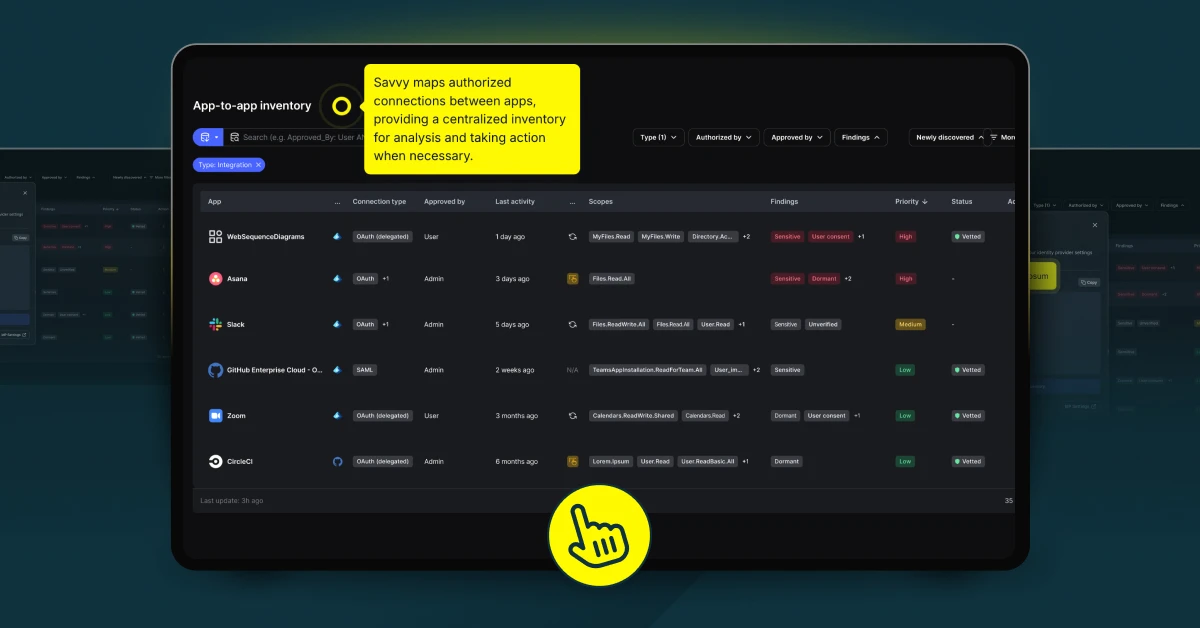Securing Single Sign-On (SSO) for SaaS
Organizational IT infrastructure is growing at a rapid pace. Organizations are embracing cloud and software-as-a-service (SaaS) technologies to make their businesses more agile and rapidly innovate. However, many of these systems and services employ their own logins, creating an ever-growing amount of user credentials for users to manage just to accomplish their daily work. On average, users have 87 different credentials for their work, which does not even account for the number they need for their private life.
With so many usernames and passwords to manage creates a negative user experience driving users to adopt bad practices to make it easier to manage them. They may use weak and easy-to-guess passwords or reuse credentials multiple times to avoid forgetting them. By doing this, they inadvertently expose their organizations to a world of risk, where cybercriminals can exploit their bad practices to access sensitive work assets.
The suffering from this sprawl of assets also affects businesses as well. The administrative overhead of assigning and managing these accounts takes a toll. Every time a user joins the company, changes roles, or leaves a position, staff has to update every system to reflect the new access levels. This is time-consuming and prone to oversights and errors, where users may leave an organization, but their rights may persist far beyond, leaving exposures.
What is Single Sign-On?
To address this problem, many organizations have turned to Single Sign-On (SSO), which allows one set of login credentials to access multiple applications. There are many ways to implement SSO, including OAuth, LDAP, and SAML, which are common standards. These technologies streamline user authentication processes, making accessing necessary tools easier without the hassle of managing multiple logins. For administrators, SSO reduces the complexity of user management and enhances security by centralizing access control, thereby minimizing potential vulnerabilities and improving overall efficiency.
What Are The Benefits of SSO?
One of the main drivers for businesses turning to SSO is convenience. It simplifies the authentication process for users and administrators. For users, it reduces the number of credentials that need to be remembered, reducing password fatigue and improving productivity. As for administrators, they are more easily able to manage accounts, centralize password resets, and general access. Rather than making dozens of accounts for a new user, all changes are made in one location. When an individual leaves the organization, it only takes a single account being disabled to block access to all of the interconnected assets an organization may use.
By moving to SSO, organizations eliminate a wide variety of risks. SSO allows organizations to apply better security controls, such as multi-factor authentication (MFA), to all of their systems, reducing the risk of attackers compromising credentials and using them to access organizational assets. It also reduces the risk of users having access beyond their tenure at an organization, as the process is simplified, allowing teams to cut access more quickly after a termination, shrinking the period where a user may misuse their access.
What Are the Challenges of SSO
Implementing Single Sign-On (SSO) comes with several challenges that organizations must address. The initial setup can be complex, requiring careful integration with existing systems and ensuring compatibility across various applications. This complexity can be daunting, particularly for organizations with diverse IT environments.
Additionally, SSO creates a single point of failure; if the SSO system experiences downtime, users lose access to all connected applications, potentially disrupting business operations. While SSO enhances security by centralizing authentication, it also means that a single compromised credential can provide access to multiple systems, amplifying the potential damage of a breach.
Implementing and maintaining an SSO solution can be prohibitive, especially for smaller organizations with limited IT budgets. These costs include the initial deployment and ongoing maintenance, monitoring, and updates to ensure the system remains secure and functional. Despite these challenges, the benefits of SSO often outweigh the drawbacks, making it a valuable tool.
How Do You Secure SSO?
SSO security starts with understanding all the assets that need to be used. In many cases, SaaS and cloud technologies may be procured outside of standard IT channels, driven by business needs rather than processes. These cases can be incredibly challenging, requiring specialized tools to determine what solutions your organization is using.
Once your organization understands what needs to use SSO, it can start consistently implementing it. As part of this implementation, additional controls such as MFA can add an extra layer of security, ensuring that even if credentials are compromised, unauthorized access is prevented. This additional verification step significantly reduces the risk of breaches.
Additionally, defining and enforcing strict access controls ensures that only authorized users can access sensitive applications and data. These controls help prevent unauthorized access and maintain the confidentiality and integrity of organizational resources.
Continuous monitoring and alerts augment the SSO environment, allowing organizations to quickly detect and respond to suspicious activities by setting up real-time monitoring and alert mechanisms, thereby mitigating potential threats.
Regular security audits are essential to identify and address any vulnerabilities within the SSO system. These audits help maintain the integrity of the authentication process and ensure that security measures are up-to-date and effective.
Together, these strategies form a comprehensive approach to securing SSO and protecting against evolving security threats.
Building Secure Authentication for SaaS Ecosystem with Savvy
Is your organization ready to take control of its SaaS sprawl and normalize authentication across it? Discover how Savvy’s comprehensive solutions can protect digital assets and streamline security processes. Whether you are looking to enhance your current security measures or build a new, more resilient approach from the ground up, Savvy is here to help.
Visit our homepage or explore our product page to learn more and get started with securing your SaaS ecosystem today.
FAQ
What is the difference between SSO and password managers?
- SSO allows access to multiple applications with one set of credentials, while password managers store and autofill different passwords for different sites.
Can SSO be used with mobile applications?
- Yes, SSO can be integrated with mobile applications to streamline authentication and improve security.
Is SSO suitable for small businesses?
- SSO can benefit small businesses by reducing password management complexity and enhancing security, though cost and implementation may be considerations.


